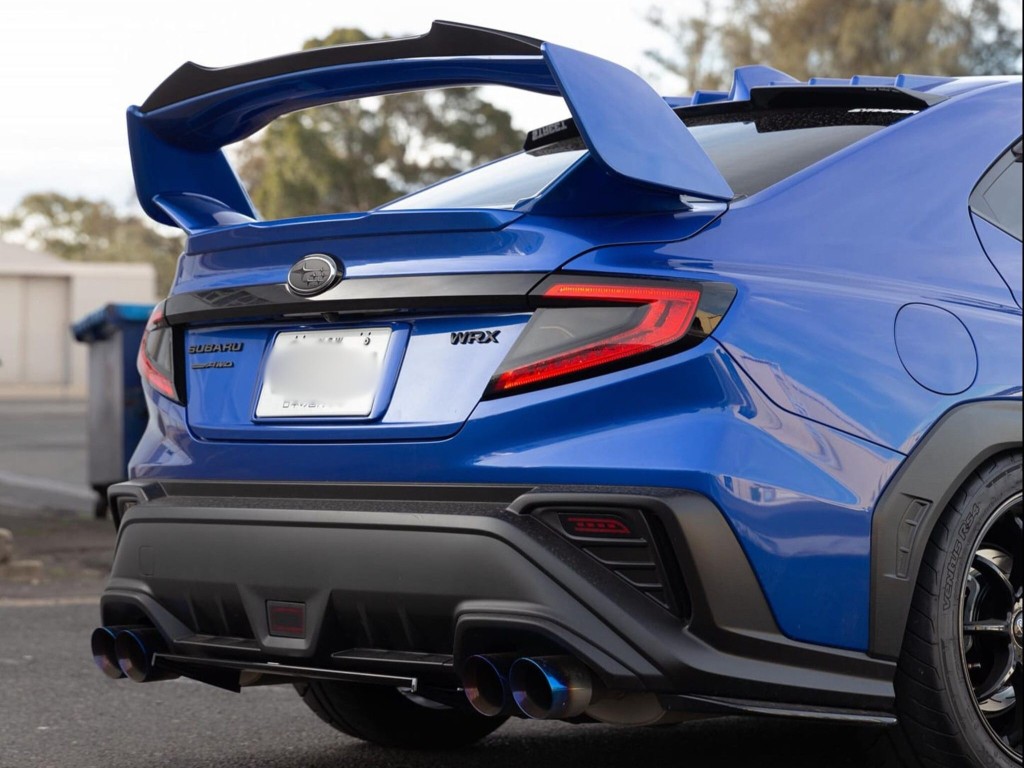Despite track-oriented cars being equipped with some serious performance systems and components, aftermarket ones are still considered to be the more capable ones. OEM parts are generally made to give you a reasonable amount of performance without scaring you on a corner or through a chicane.
Aftermarket parts and systems are made to give you a full-on performance-oriented experience without costing as much as OEM ones. Aftermarket upgrades are also typically much lighter than their OEM counterparts. This can be said especially for exhausts which can weigh up to 4 kg less than the stock exhaust.
Types of Performance Exhausts

Cat-Back
The most common performance exhaust system for most people that are new to the racing scene is a cat-back system. These exhausts are able to replace everything from the catalytic converter to the exit pipes. This type of aftermarket race exhaust is going to cost you the least but it will also improve performance the least out of the three.
Header-Back
If you’re serious about your performance gains, you should definitely consider going for a header-back upgrade. If the cost and amount of time you need to spend installing such a system are not a problem, then you have a real gem on your hands. That’s because a header-back racing exhaust replaces all the components from the manifold to the tailpipes. This way you can modify each spec and component individually making it quite a customisable solution.
Turbo-Back
If you own a turbocharged car and want to make it track-ready, then a turbo-back exhaust should be in your sights. Turbo-back systems are the most complete option for a turbo engine. That’s because, with it, you get to replace everything from the turbocharger to the exhaust tips. This also means it costs the most out of the three but it also means that it gives the most drastic difference in performance.
Exhaust System Materials

Stainless Steel
The most common material a race exhaust comes made of is stainless steel. Tough, durable and heavy this type of exhaust can withstand temperature changes and fend off corrosion quite well. It’s also not as expensive as some other types of exhausts except for one.
Aluminised Steel
That one is made of aluminised steel. These exhaust systems are the lightest performance exhausts but also the least impact-resistant. They have good corrosion resistance and can handle temperature changes well but nothing like a stainless steel exhaust can.
Titanium
A titanium performance exhaust system is much better than both stainless and aluminised steel exhausts. It’s extremely light and strong while being able to withstand the highest temperatures. It’s rather expensive though since it’s also a sustainable product.
Inconel
The most advanced material or blend of materials an exhaust can be made of is inconel. This type of racing exhaust is used in F1 cars and it’s not common for road-legal cars to have it since it’s extremely hard to find and if you do it will cost you a fortune.
Important Features of Performance Exhausts

Diameter
The diameter of the piping is what determines the flow of gasses inside the exhaust. Larger tubing is better since it lets more air go through the system at a much faster rate. But be careful not to go with too wide of a diameter as it can easily backfire on you by creating what is known as exhaust backpressure.
Bends
The types of bends a performance exhaust system can have can be either mandrel or crush-bent. Crush bends are not what you should look for if you want to get the most out of your system since they make it restrictive. Mandrel bends are the better solution since they are smooth and thus don’t put any restrictions on the flow of gasses.
Thickness
The thickness of the material the exhaust is made of can affect both the sound and speed of your car. For instance, a thicker material makes for less drone but it also adds more weight which makes the car accelerate slower. Thinner materials make it lighter which helps with weight savings but it doesn’t help prevent exhaust drone.
Valve
You can also put a valve on your performance exhaust to help you change loudness. Opening up the valve will give you the true growl of what’s under the bonnet while closing the valve will make it produce a silent burble. This is useful if you want to drive your performance vehicle on both the track and on the way back home.
Exhaust Tips
The appearance of your car depends on the exit pipes and the more there are the more aggressive your vehicle will look. Also, the size of the tailpipes affects appearance while the number of walls they have affects sound. Double-walled tips easily make for a deeper growl. You can go for single-wall tips but keep in mind that they won’t only make your vehicle sound more aggressive but they will also make it look less aggressive.


Leave a comment